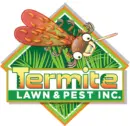Meet the Beetles (2024)
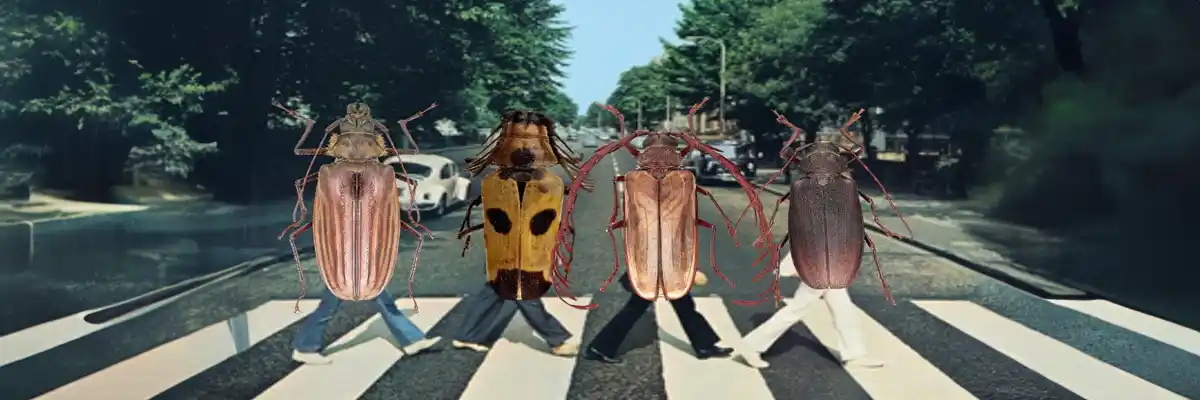
When you think of beetles, you might picture four dudes rocking bowl cuts with English accents, but Florida is home to an even more diverse and fascinating array of beetles! These insects belong to the order 𝘊𝘰𝘭𝘦𝘰𝘱𝘵𝘦𝘳𝘢. They play various roles in the ecosystem, from pollinators to decomposers. Let’s take a magical mystery tour through some of the notable beetles you might encounter in the Sunshine State, with a few nods to their musical namesakes. Here, we will focus on beetle identification and control to help you manage these insects effectively.
Delta Flower Scarab Beetle (𝘛𝘳𝘪𝘨𝘰𝘯𝘰𝘱𝘦𝘭𝘵𝘢𝘴𝘵𝘦𝘴 𝘥𝘦𝘭𝘵𝘢)
First on our tour is the Delta Flower Scarab Beetle, a tiny performer at just 8-11 mm long. With a distinctive yellow “Δ” marking on its pronotum, this beetle is a frequent visitor to flowers and feeds on pollen. While it might not be topping the charts in terms of agricultural impact, it’s believed to play a significant role in pollination. Active during the day from May through August, these beetles are like the roadies of the insect world, supporting the health of native plants and trees.
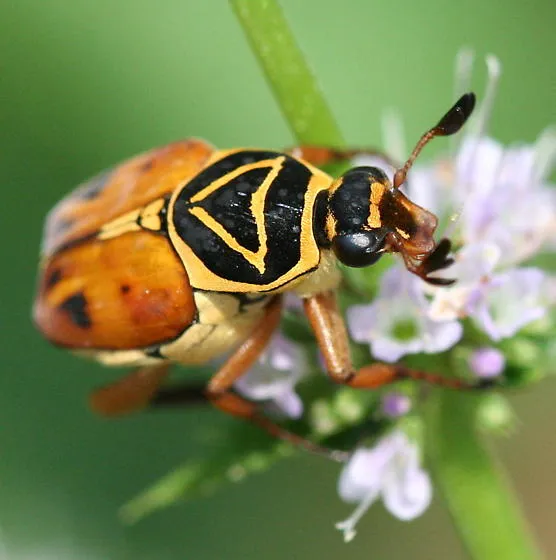
Six-Spotted Flower Longhorn Beetle (𝘚𝘵𝘳𝘢𝘯𝘨𝘢𝘭𝘪𝘢 𝘴𝘦𝘹𝘯𝘰𝘵𝘢𝘵𝘢)
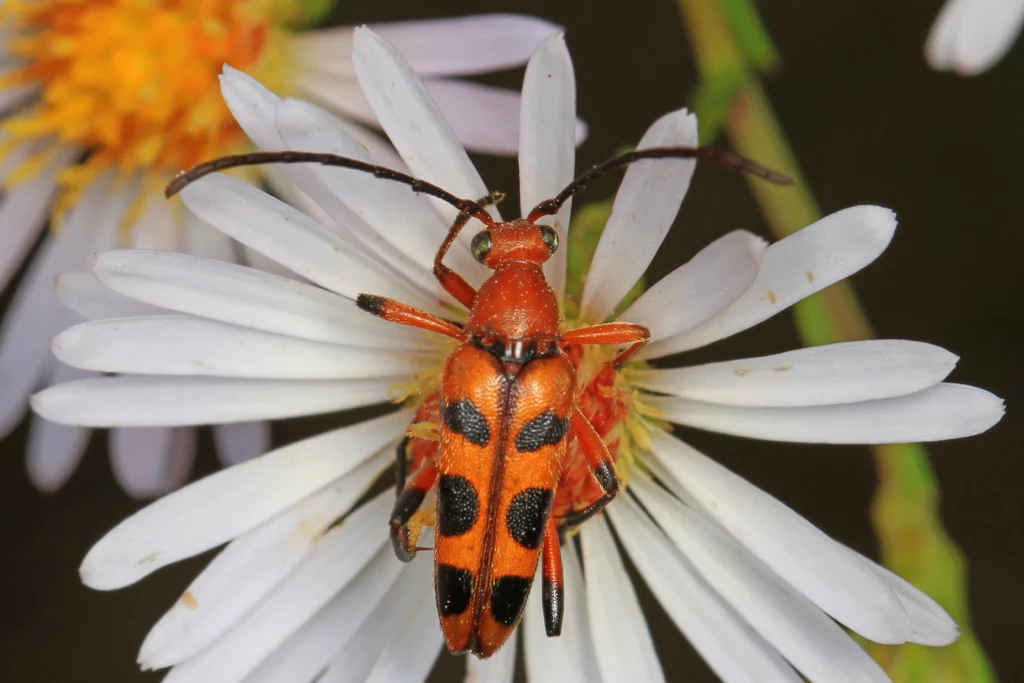
Next, we have the Six-Spotted Flower Longhorn Beetle, another flower-loving insect. This beetle, measuring 8-13 mm, gets its name from the six spots adorning its wings. Just as The Beatles had long hair, these beetles boast impressively long antennae, often longer than their bodies. They’re not just pretty faces, though—the larvae are wood borers, playing a crucial role in breaking down dead and decaying trees, which is essential for forest health.
Rainbow Scarab Beetle (𝘗𝘩𝘢𝘯𝘢𝘦𝘶𝘴 𝘪𝘨𝘯𝘦𝘶𝘴)
The Rainbow Scarab Beetle is the flashy frontman of our insect band, dazzling with colors that range from green and blue to red and black. Found in sandy soils, these beetles are nature’s recyclers, feasting on dung. Their vibrant exteriors might remind you of the colorful Sgt. Pepper’s uniforms, making them hard to miss and a standout in Florida’s diverse beetle population.
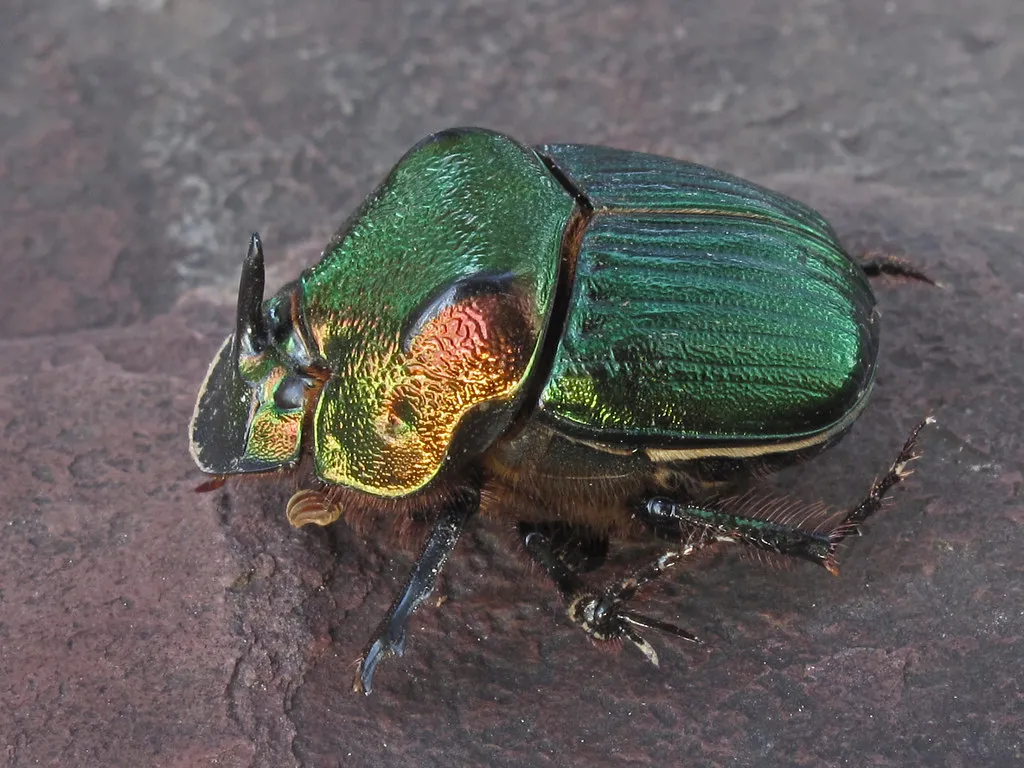
Ox Beetle (𝘚𝘵𝘳𝘢𝘵𝘦𝘨𝘶𝘴 𝘢𝘯𝘵𝘢𝘦𝘶𝘴)
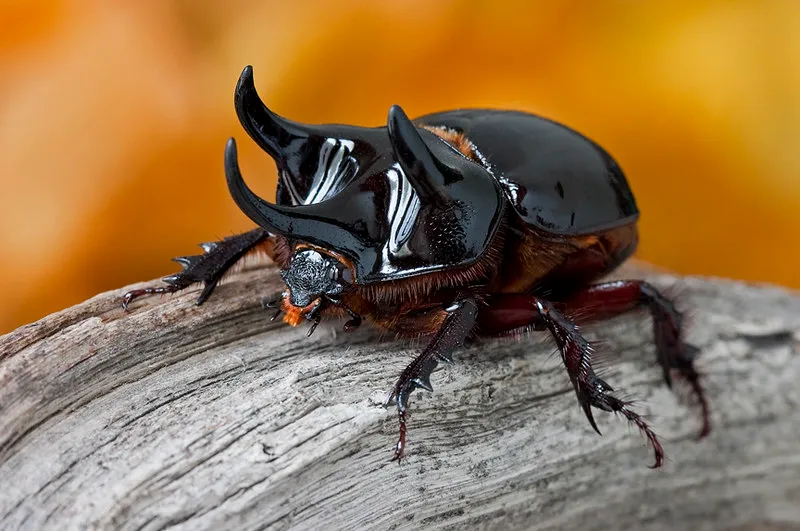
In the role of the strong, silent bassist, we have the Ox Beetle. These burly beetles, part of the rhinoceros beetle subfamily, are known for their prominent horns and robust build. Their larvae (commonly known as white grubs) feed on plant roots, while adults chow down on decaying vegetation and dead wood. They might not be as flashy as the Rainbow Scarab, but they play a crucial role in nutrient cycling and soil health.
Dark Flower Scarab Beetle (𝘌𝘶𝘱𝘩𝘰𝘳𝘪𝘢 𝘴𝘦𝘱𝘶𝘭𝘤𝘳𝘢𝘭𝘪𝘴)
Another notable mention is the Dark Flower Scarab Beetle. While not quite as psychedelic as the Rainbow Scarab, these beetles cause a bit of a stir by feeding on the flowers and fruits of many trees, including avocados and mangoes. Their diet can make them a pest to some South Florida crops, but they’re also part of the ecological ensemble that keeps the balance in check.
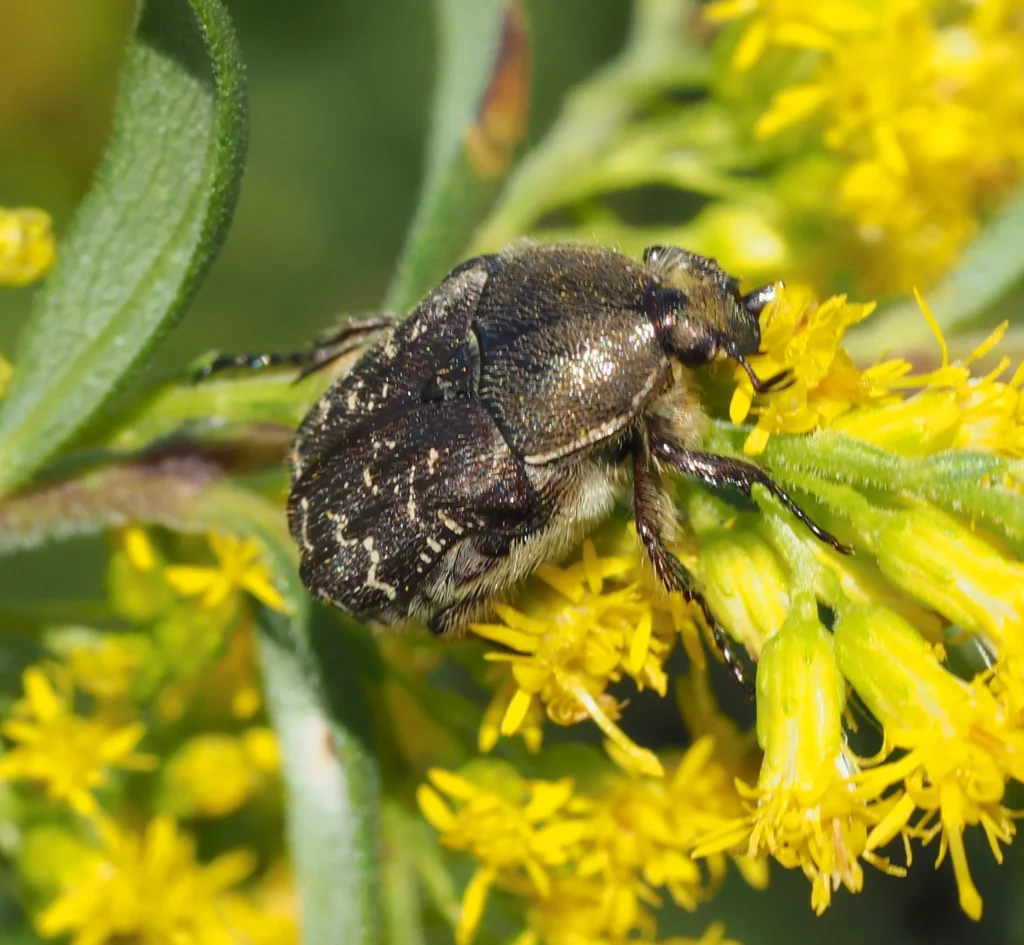
Blue-Green Citrus Root Weevil (𝘗𝘢𝘤𝘩𝘯𝘢𝘦𝘶𝘴 𝘭𝘪𝘵𝘶𝘴)
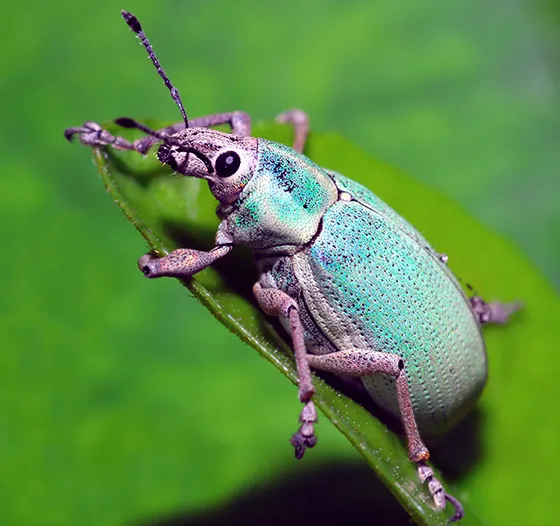
Just like Ringo, the Blue-Green Citrus Root Weevil might not be as popular as some of the other beetles, but it has a unique groove. This beetle, which targets citrus trees, is a master of disguise with its light blue-green color. Adults prefer tender new foliage, while larvae feast on roots underground, making them a challenge for citrus growers. Despite their tendency to cause crop damage, they’re part of the diverse beetle band that calls Florida home.
American Carrion Beetle (𝘕𝘦𝘤𝘳𝘰𝘱𝘩𝘪𝘭𝘢 𝘢𝘮𝘦𝘳𝘪𝘤𝘢𝘯𝘢)
Rounding out our tribute is the American Carrion Beetle, which, like a dedicated drummer, works tirelessly behind the scenes. These beetles are decomposers, feeding on carrion and playing a critical role in breaking down dead animals and recycling nutrients back into the ecosystem. With their yellow and black coloring, they’re the Bumblebee of the insect world, buzzing around in daylight to get the job done.
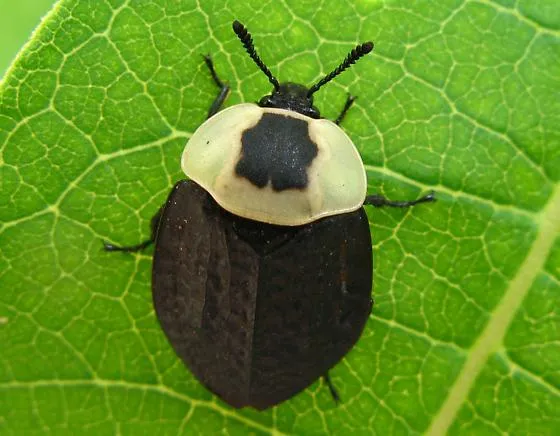
Diaprepes Root Weevil (𝘋𝘪𝘢𝘱𝘳𝘦𝘱𝘦𝘴 𝘢𝘣𝘣𝘳𝘦𝘷𝘪𝘢𝘵𝘶𝘴)
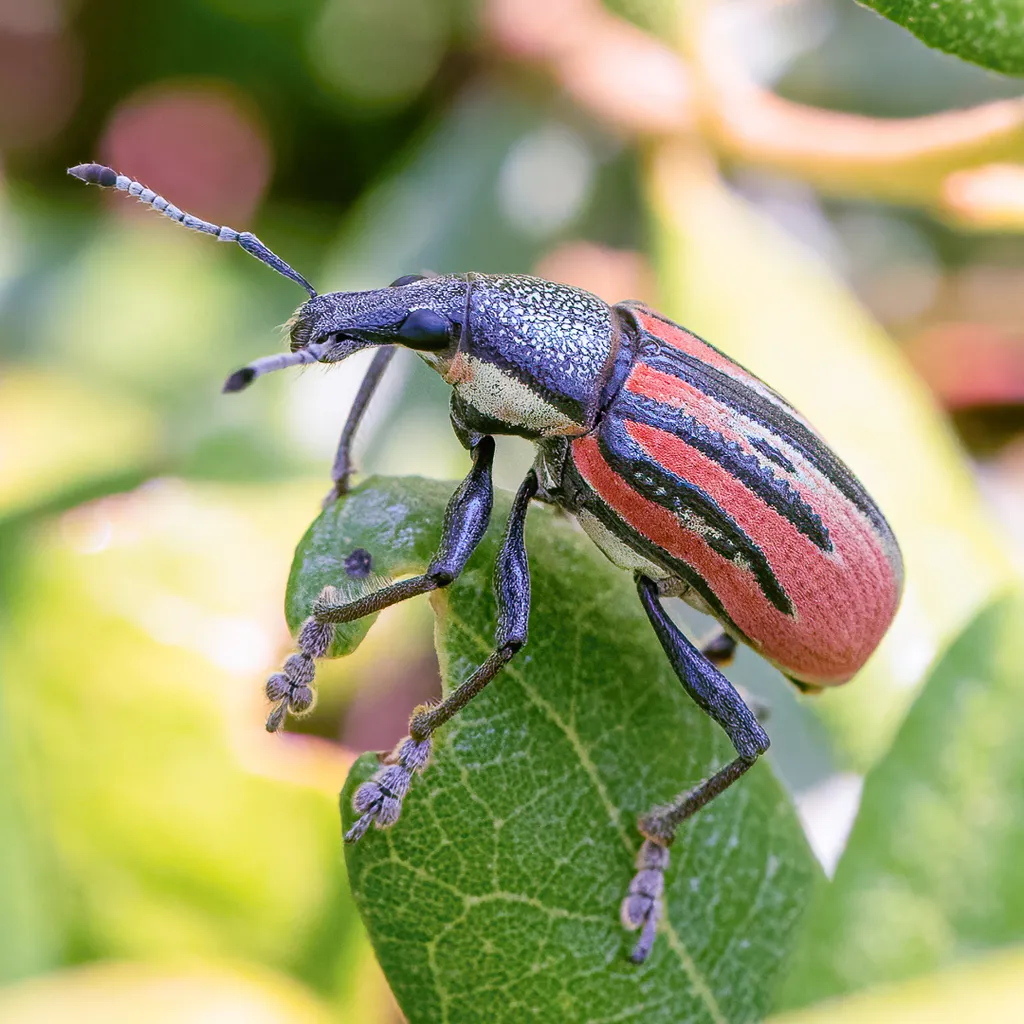
No list would be complete without mentioning the Diaprepes Root Weevil, an invasive species that’s become a serious agricultural pest. This beetle, capable of producing over 5,000 eggs in its short lifespan, is a true rock star in terms of impact, albeit not in a good way. Efforts to control its population include introducing parasitic wasps, showing how even the most troublesome beetles can inspire innovative solutions.
Cottonwood Leaf Beetle (𝘊𝘩𝘳𝘺𝘴𝘰𝘮𝘦𝘭𝘢 𝘴𝘤𝘳𝘪𝘱𝘵𝘢)
The Cottonwood Leaf Beetle is a leaf-eating beetle that primarily targets willows and poplars. These beetles have a unique look with black heads and thoraxes, and yellowish elytra with broken black stripes. Much like a lead guitarist, their presence can be felt as they make significant impacts on their host plants by cutting holes in leaves and skeletonizing them during their larval stage.
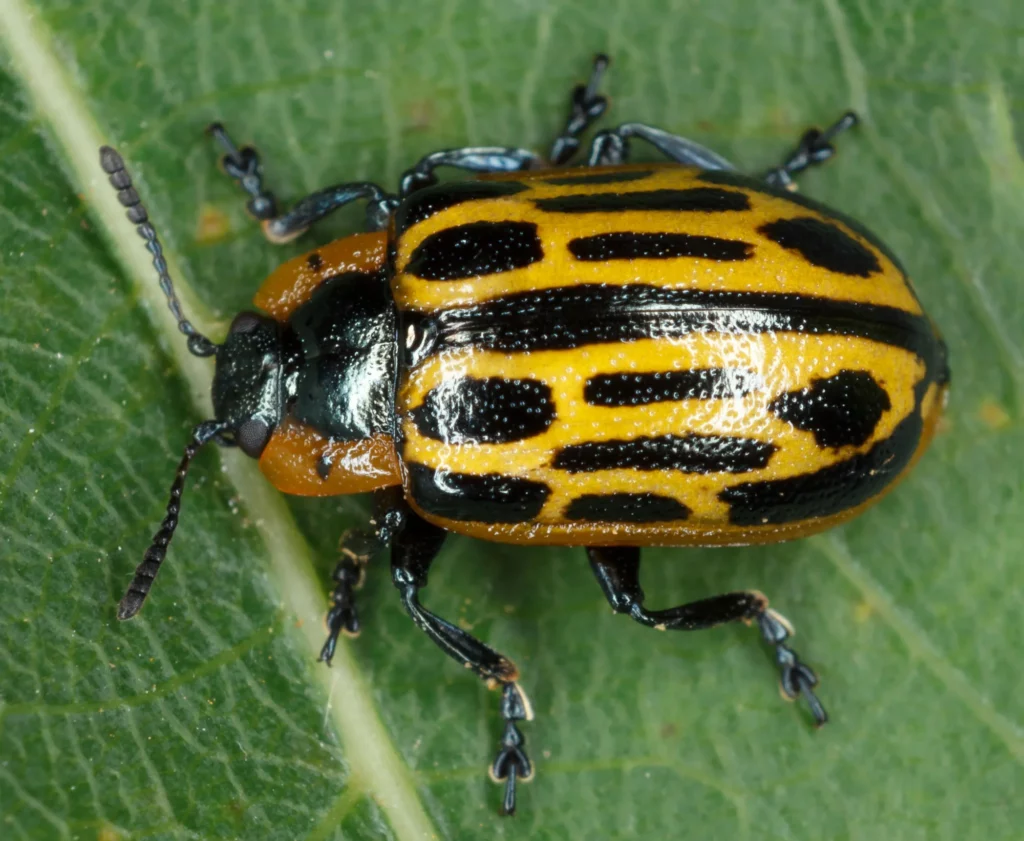
Blister Beetle (𝘔𝘦𝘭𝘰𝘪𝘥𝘢𝘦)
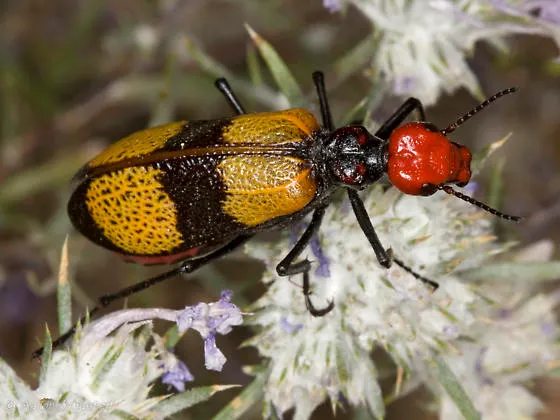
Florida is home to 26 species of blister beetles, which produce a chemical called cantharidin that can cause blisters on skin and is toxic to mammals if ingested. These beetles are like the unpredictable artists of the insect world, their presence in alfalfa hay can lead to poisoning in livestock, making them a pest to be aware of.
While beetles are fascinating and vital to nature, it’s perfectly okay to keep their performances outside where they belong.
If beetles are causing a ruckus in your home, it might be time to call in some professional help. For expert assistance in removing beetles and other pests, contаct Termite Lawn and Pest. Our team can help ensure that your living space remains harmonious and free from unwanted insect intrusions.
